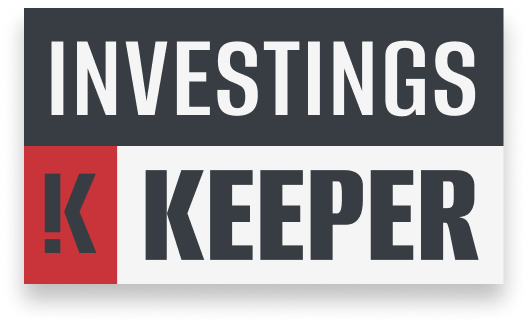
“Dear Tori: I have been investing consistently in the stock market for about a year but I’m not seeing the results I expected. I have a diverse portfolio, invest monthly, and track my performance daily – and while my overall portfolio has increased in value, it hasn’t grown nearly as much as I had anticipated. Am I doing something wrong?”
When I first started investing, one of my first considerations was my personal goals. Thanks to movies like “The Wolf of Wall Street” and investing chat rooms on Reddit, many new investors set lofty goals of “getting rich quick.”
I want to make it very clear from the start that – while there certainly have been people who have seemingly gotten rich “overnight” through investing – the reality is that those people are the exceptions to the rule. Most of our investing journeys won’t follow that narrative.
Regardless, investing is still one of the best ways historically to build sustainable wealth and financial freedom, but it is often over decades.
I believe we set ourselves up for disappointment when we create investing goals that are unrealistic. If progress feels slower than expected, it can slow down our momentum or cause us to give it up altogether.
I, for one, don’t want anyone to give up investing out of discouragement or frustration, so today I’m going to give a look at how I set realistic investing goals that may help on your path toward financial freedom.
1. Don’t check your portfolio everyday
Before digging in, I want to commend you for your diligence with those daily finance checks. Keeping tabs on your investments means that you’re not only putting money toward your financial goals, but also time and energy. Well done!
Still, I’d suggest spacing out performance checks if it causes you fear, anxiety or worry.
Like I mentioned, investing is a long-term game – you are likely to see the best results when you hold onto your investments for decades and allow them to appreciate in value through the highs and lows of the market. Checking your performance every day can quickly become a practice of hyper-fixating on minor increases or decreases in portfolio performance, which often leads to making impulsive investing decisions. This could look like buying a bunch of shares of a trendy stock when its value has been inflated and is about to plummet – or selling your shares of a stock that has a consistent history of growth during a day when the price has minorly decreased.
In other words, letting minor shifts in value dictate your investing strategy is a surefire way to end up overstressed.
So instead of daily checks, I do a deep-dive into my portfolio monthly during a periodic money date with myself when I cozy up and assess all aspects of my finances. This gives me enough perspective to make appropriate investing adjustments as needed.
2. Set goals based on your phase of life, desired income, and long-term investing strategy
Without much time and experience in the market, it can be difficult to create a mental framework for what realistic investing goals could or should be. Sure, making $100,000 in the stock market during your first year of investing sounds great, but it probably isn’t going to be realistic for most new investors.
That is why I decided to stop thinking about my investing goals only within the framework of a monetary amount, and started thinking of my investing goals within the framework of my phase of life, desired income, and long-term investing strategy, as these allow me to set realistic goals that are not defined simply by a dollar amount.
Setting goals in accordance with your current phase of life allows you to set goals based on what is realistic and sustainable for your current lifestyle. This could look like:
…a recent college graduate with a goal of starting a retirement account by the end of the year.
…someone settling into their career with a goal of maxing out their Roth IRA every year.
…a new parent with a goal of monthly contributing to a 529 Plan for their child’s future education.
Setting investing goals in accordance with your desired income seems like a no-brainer, as you cannot invest without having some sort of income. So many of your numerical investing goals can be dependent on your income.
It’s important to note that your income-related investing goals will change – potentially significantly – throughout your professional life as you gain experience, change industries, get promoted, experience job loss, etc. So reevaluating these income-related goals as you go through these career transitions will be key to creating realistic, sustainable goals.
This could look like:
…setting a goal of contributing 5% of your income to your investments every month.
…setting a goal of increasing your investments every time you get a raise, proportional to your new salary.
…setting a goal of increasing your overall income by 10% through investing.
Finally, setting investing goals in accordance with your long-term investing strategy will allow you to set clear expectations for the ways that you buy, sell, and hold onto your investments in order to achieve your greater investing goals.
This could look like:
…setting a goal of holding onto your investments in your taxable brokerage for a minimum of 7 years until you buy a house.
…setting a goal of automating contributions to your retirement accounts.
…setting a goal of diversifying your investments across taxable and tax-advantaged retirement accounts by the end of the year.
By creating my investing goals that are in accordance with these three criteria, I remove the opportunity to be disappointed by not achieving a certain dollar amount, and also give myself more personalized ways to measure my investing progress.
3. Reevaluate your goals regularly
Finally, it’s important that I regularly check on my goals and make appropriate adjustments as necessary. Periodically, I take some time to evaluate the investing goals I’ve set and measure how much progress I’ve made towards those goals.
I find that one of the quickest and easiest ways to do so is by using Personal Capital’s Investment Checkup tool. This tool gives me a super clear picture of my portfolio’s performance in order to develop the combination of investments that aligns with my investing goals. From assessing my portfolio’s risk to analyzing my past performance, I’ve gotten a lot of value from the Investment Checkup tool.
If the Investment Checkup tool shows that you are on track to reach your goals by the end of the year, keep on doing what you’re doing!
If you find that you have already reached your goals, it’s time to set some new ones.
If you’re far from reaching your goals, they may be unrealistic. It’s time to set new goals informed by the experience you’re now gaining.
When setting new goals or adjusting current goals, I often make minor tweaks as opposed to drastic changes. This allows me to experiment with my investing approach and cadence. In the end, I’m better dialed into what works best for me and my goals.
Get Started with Personal Capital’s Free Financial Tools
Personal Capital compensates Tori Dunlap of Her First $100k (“Author”) for providing the content contained in this article. Compensation not to exceed $500. Author is not a client of Personal Capital Advisors Corporation. Additionally, in a separate referral arrangement between Author and Personal Capital Corporation (“PCC”), Author is paid $70 and $150 for each person who uses Author’s webpage (www.HerFirst100k.com) to register with Personal Capital and links at least $100,000 in investable assets to Personal Capital’s Free Financial Dashboard. As a result of these arrangements, Author may financially benefit from referring potential clients to Personal Capital and/or be incentivized to present blog content that is favorable to PCC. No fees or other amounts will be charged to investors by Author or Personal Capital as a result of the Referral Arrangement. Investors that are referred to PCC and subsequently subscribe for investment advisory services provided by PCC’s affiliated adviser, Personal Capital Advisors Corporation (“PCAC”) will not pay increased management fees or other similar compensation to Author, PCC or PCAC as a result of this arrangement. The content contained in this blog post is intended for general informational purposes only and is not meant to constitute legal, tax, accounting or investment advice. You should consult a qualified legal or tax professional regarding your specific situation. Keep in mind that investing involves risk. The value of your investment will fluctuate over time and you may gain or lose money.



